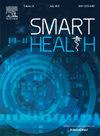Smart health practices: Strategies to improve healthcare efficiency through digital twin technology
Q2 Health Professions
引用次数: 0
Abstract
A digital twin (DT) is a virtual representation of a real-world object that has dynamic, bidirectional connections between the real-world object and its digital domain. With the advent of Industry 4.0, DT technology was initially applied in the engineering and manufacturing sectors, but recent research indicates DT may also be useful within the healthcare sector. The purpose of this study was to determine the potential applications of DT technology in the healthcare sector and offer suggestions for its effective implementation by healthcare institutions to increase service efficiency. Based on a review of the literature, we developed a model to demonstrate the applications of DTs on public and personal health. A questionnaire with five points Likert scale was then designed based on this model. Data were collected through an online survey conducted with 306 participants. To verify our hypothesized correlations among the constructs, structural equation modeling was used. The findings suggested that explainable artificial intelligence-based early diagnosis, simulation model-based vaccination, artificial intelligence location technology, sensor-based real-time health monitoring, and in silico personalized medicine are potential applications of DT that can increase healthcare efficiency. We also considered the moderating influence of (a) security and privacy and (b) certification and regulatory issues, acknowledging their pivotal roles in ensuring the successful implementation and widespread acceptance of DT technology in the field of healthcare. This study contributes to the body of knowledge in academia and offers useful insights for technologists, policymakers, and healthcare professionals who want to fully utilize DT technology to build an effective healthcare system that can adapt to the changing needs of communities and individuals.
智能医疗实践:通过数字孪生技术提高医疗效率的策略
数字孪生(DT)是现实世界对象的虚拟表示,它在现实世界对象与其数字域之间具有动态的双向连接。随着工业4.0的出现,DT技术最初应用于工程和制造领域,但最近的研究表明,DT在医疗保健领域也很有用。本研究的目的是确定DT技术在医疗保健领域的潜在应用,并为医疗机构有效实施DT技术提供建议,以提高服务效率。在回顾文献的基础上,我们开发了一个模型来展示直接诊断在公共和个人健康方面的应用。然后根据该模型设计了李克特五点量表问卷。数据是通过对306名参与者进行的在线调查收集的。为了验证我们假设的构念之间的相关性,我们使用了结构方程模型。研究结果表明,基于可解释的人工智能早期诊断、基于仿真模型的疫苗接种、人工智能定位技术、基于传感器的实时健康监测和计算机个性化医疗是DT提高医疗效率的潜在应用。我们还考虑了(a)安全和隐私以及(b)认证和监管问题的调节影响,承认它们在确保DT技术在医疗保健领域的成功实施和广泛接受方面的关键作用。本研究为学术界的知识体系做出了贡献,并为希望充分利用DT技术建立有效的医疗保健系统以适应社区和个人不断变化的需求的技术人员、政策制定者和医疗保健专业人员提供了有用的见解。
本文章由计算机程序翻译,如有差异,请以英文原文为准。
求助全文
约1分钟内获得全文
求助全文

 求助内容:
求助内容: 应助结果提醒方式:
应助结果提醒方式:


